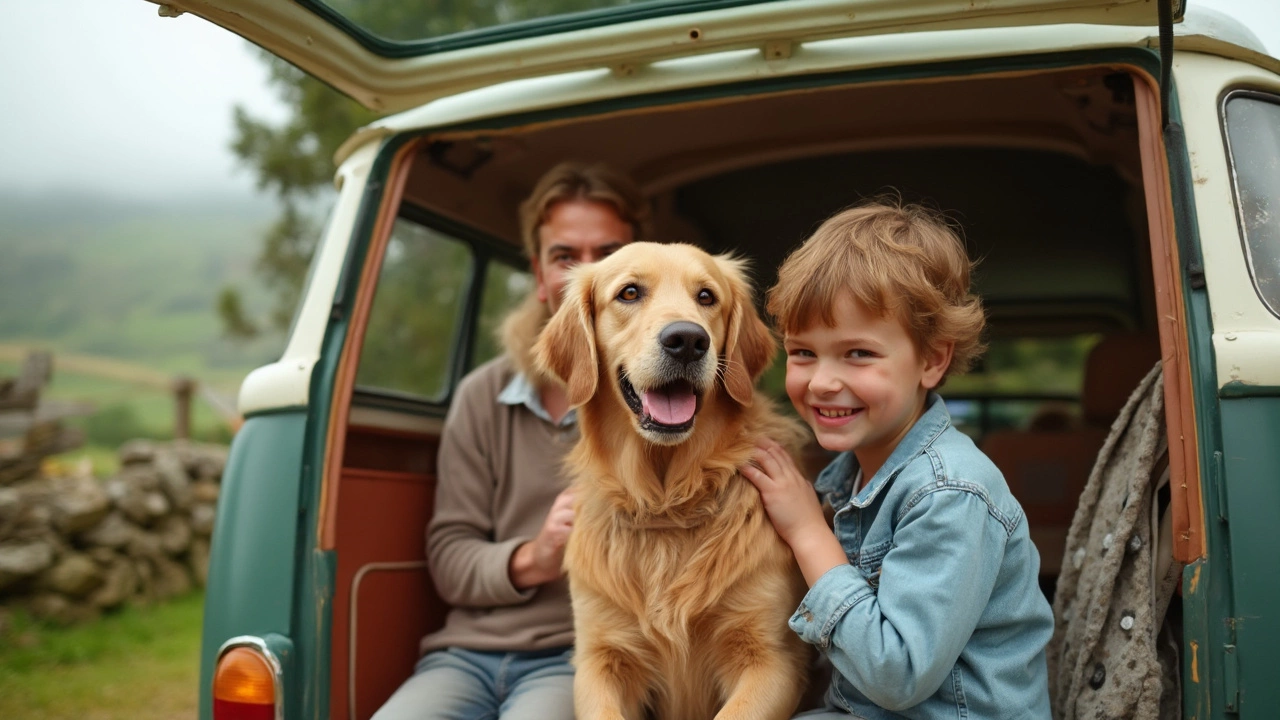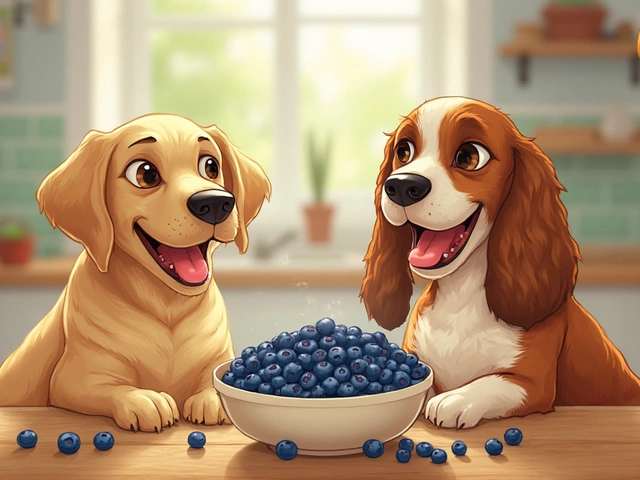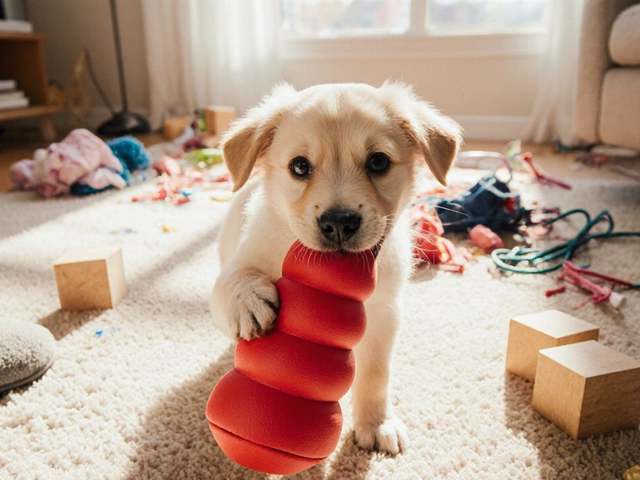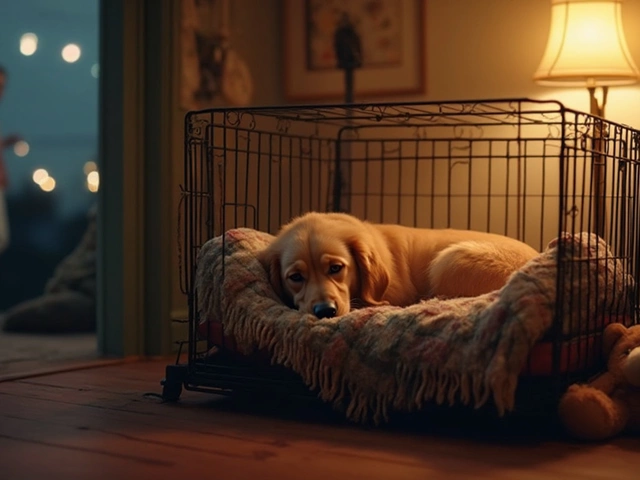Kissed your dog lately and caught him looking back like, “What’s that about?” You’re not alone. Most dog parents wonder if their pup really gets what those kisses mean, or if he just tolerates it for the treats afterward. Here’s the thing: dogs and humans don’t speak the same love language.
Dogs don’t kiss in the wild or snuggle on a whim. When you’re planning a trip and packing chew toys, your pooch is picking up on excitement, not prepping for hugs and kisses. Instead, affection for dogs is all about touch, tone, and the vibe you share — especially in new places like dog-friendly hotels or campsites. They might not “get” kisses the way we do, but they definitely sense your good intentions, especially when you keep things calm and positive.
Understanding your dog’s reaction can make your getaways more fun for both of you. Next time you swoop in for a kiss, watch for his tail wag or relaxed posture. Those are the green lights. If he pulls away, maybe save the smooches for later and try a belly rub instead. Making small changes in how you show love can help your pup feel right at home, wherever you wander together.
- Do Dogs Understand Human Kisses?
- How Dogs Show and Receive Love
- Reading Your Dog's Body Language
- Dog Kisses on Holiday: Different Environment, Different Responses?
- Better Ways to Say 'I Love You' to Your Dog
- Travel Tips for a Happy, Affectionate Pup
Do Dogs Understand Human Kisses?
So, what’s actually going on when you lean in for a kiss and your dog looks at you with those big eyes? Here’s the truth: dogs don’t naturally understand kisses the way people do. In the wild, kissing isn’t part of their social rituals. It’s basically a human thing. But, dogs are experts at reading us. Over time, many dogs figure out that a gentle kiss on the head usually means their human is happy and relaxed around them—especially if it’s followed by a scratch or two.
There’s interesting research out there. When dogs hear a human using a loving tone, parts of their brain light up with happiness, a lot like what happens in us. Still, that doesn’t mean they connect the dots to kissing unless they’ve gotten used to it. If you’ve kissed your dog since he was a pup, chances are he’s picked up on your vibe and probably enjoys it (or at least tolerates it) because it’s attached to good stuff, like attention or treats. If you try kissing a dog who’s never experienced it though, he might act confused or even pull away.
According to Dr. Brian Hare, a recognized canine cognition expert at Duke University,
“Dogs are incredible social learners. They can connect your kisses with positive emotions if you consistently show affection in a way they like.”
Here are some signs your dog is comfortable with kisses:
- Relaxed body and wagging tail
- Leaning into you rather than backing away
- Soft eyes or even gentle licking back
- No warning signals like growling or lip-licking (which means stress in dog language)
On holidays or trips, your dog might act a little different with all the new smells and sounds. Don’t be surprised if he’s a bit more sensitive about closeness or kisses. Keep an eye out, respect his boundaries, and remember: the best way to connect is just to read his comfort level and go from there. And if you’re ever unsure, a belly rub or head scratch is a sure bet most dogs trust every time.
For anyone planning a dog friendly holiday, understanding what your pup thinks about kisses can save you both some mixed signals. Dogs thrive on positive, predictable interactions, especially when their world is packed up and on the road.
How Dogs Show and Receive Love
People show love by hugging, kissing, and saying sweet things. Dogs have their own lingo. Sometimes, those tail wags and nose-nudges mean more than you think. Dogs don’t just toss out affection like it’s nothing—they choose when and how to show it, being uniquely dog-like in every move.
Your pup might lean against you, follow you from room to room, or plop his head in your lap. That gentle pressure against your leg or curling up on your feet—classic dog moves for showing, “Hey, you matter to me.” In fact, a study from Canine Cottages using dog activity trackers found that a dog’s heart rate jumps by 46% when their owner says “I love you.”
- Dog kisses: Licking your face or hands is probably your dog’s version of a hug.
- Leaning: When your dog gives you his weight, he’s giving you his trust.
- Bringing you toys: Dogs don’t just bring toys so you’ll throw them; sometimes, it means they want to share something they love.
- Tail wagging: This is the big one. Not all tail wags are the same, though—a loose, full-body wag spells happiness.
How do dogs get the message when it’s your turn to show love? They’re paying attention to your voice, your body language, and especially your actions. Dogs pick up positive feelings from:
- Gentle petting or a scratch in their favorite spot (behind the ear never fails in our house!)
- Playtime with their person
- Calm, reassuring tone
- Routine—knowing what to expect helps dogs feel secure and safe
Here’s a quick glance at some ways dogs show love and how they usually react:
| Dog Behavior | What It Means |
|---|---|
| Leaning | Seeking closeness and trust |
| Licking face or hands | Affection or comfort-seeking |
| Wagging with whole body | Excitement and happiness |
| Following you around | Bonding; wants company |
| Bringing toys | Wants to share or invite play |
For dogs, love is all about feeling safe and happy. Give them consistency, notice what makes them comfortable, and watch how their affection grows on your next getaway.
Reading Your Dog's Body Language
Dog body language isn’t some mysterious code, but it can be trickier than it looks. Most of us notice the obvious stuff — tail wags and barking — but there's a lot more going on. When you give your dog a smooch on the head, his reaction isn’t just about the kiss. He’s also thinking about your tone, movements, and even what's happening around you both.
How do you tell if your pup is loving the attention, or secretly hoping you’d just hand over a treat? Watch for these signs:
- Relaxed Eyes and Mouth: Soft, blinking eyes and a slightly open mouth mean your dog is chill and happy.
- Wiggly Body and Wagging Tail:
- If the tail is wagging at mid-height and the body looks loose, your pup’s into it.
- Leaning In:
- If your dog leans toward you or nudges you for more, he’s cool with what you’re doing.
But let’s be real — not every dog loves kisses. Here are a few not-so-good signals to watch for:
- Lip Licking or Yawning:
- Repeated lip licking or yawning (when he’s not tired) can mean discomfort.
- Pinned-Back Ears:
- Ears flat against the head often signal stress or nervousness.
- Turning Away or Backing Up:
- If he’s scooting away or turning his head, that’s a polite doggy “no, thanks.”
Sometimes, it helps to see the signs side by side, so here’s a quick comparison:
| Positive Signs | Negative Signs |
|---|---|
| Relaxed eyes Loose body Wagging tail (mid-height) Leaning in or nudging | Lip licking, yawning Pinned-back ears Stiff body Turning away or scooting |
If you’re traveling, keep in mind that all these signs can get stronger. New smells, places, or people ramp up your dog’s alertness. That means a tail wag on a quiet couch might turn into a tucked tail when you’re at a busy rest stop.
Bottom line: reading your dog’s body language is key to making any dog kisses or affection meaningful — especially when you’re out of your normal routine. Just a few seconds of observation can help you know exactly how your dog is feeling in the moment.
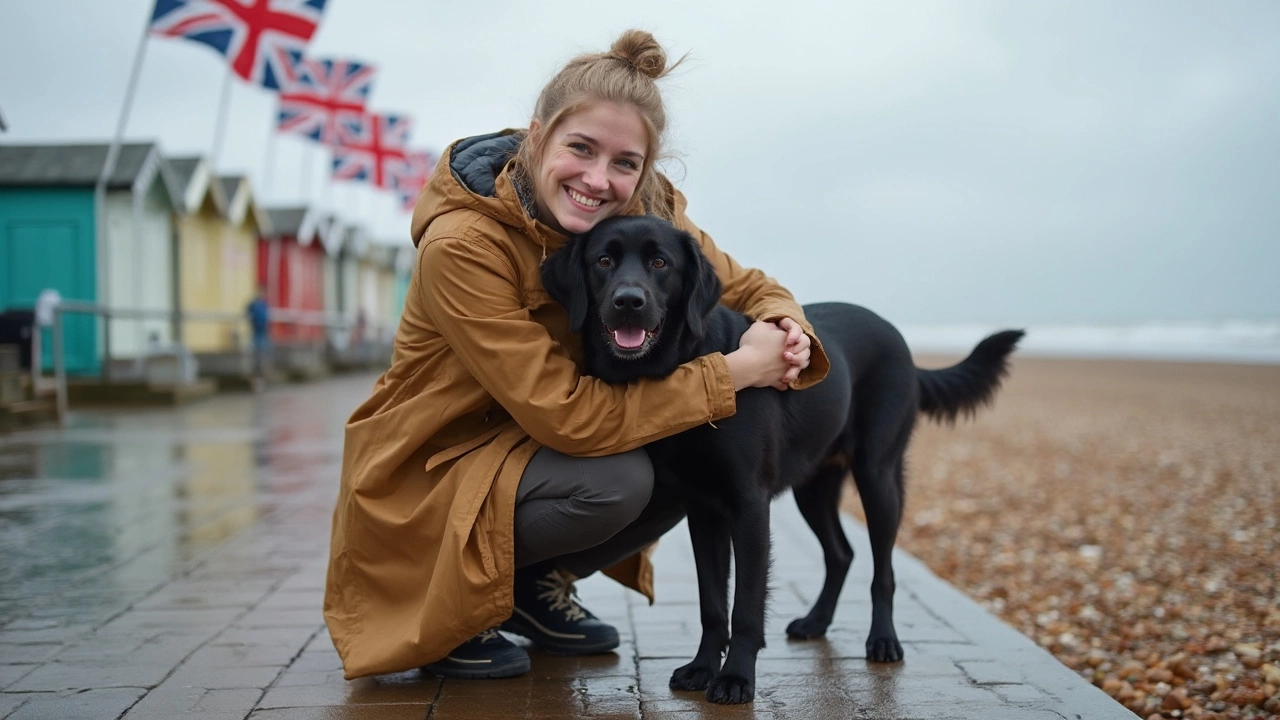
Dog Kisses on Holiday: Different Environment, Different Responses?
Ever notice your dog acting a bit off when you’re on vacation? It’s not just new smells or strangers—being away from home shakes up your dog’s sense of normal. Things that usually mean comfort, like a cuddle or a kiss, can feel different for your pup in a hotel room or rental cottage. That’s because dogs are animals of habit. The sofa at home, the backyard, the sound of your keys—those things are their safety signals. Take those away, and your kisses might not land like usual.
So, when you’re showing affection during a holiday, your dog’s reaction might change. In an unfamiliar place, even the friendliest dog might turn his head, show a little stiffness, or seem distracted when you go in for a smooch. New environments fire up their senses. They’re busy checking out the room for hazards or sniffing the weird new grass instead of relaxing into your hugs.
According to animal behaviorists, context matters a lot for dog kisses. In a 2022 study looking at dogs during travel, researchers found that dogs show more stress signals (like yawning, lip licking, or stepping away) when affectionate gestures are given in new locations. Don’t take it personally—it just means your dog is trying to get his bearings.
If you want your dog to actually enjoy kisses or hugs on holiday, keep these tips in mind:
- Stick to your normal affection routine as much as possible. If your dog loves ear scritches at home, start there.
- Give your dog time to settle into the new environment before swooping in with big shows of love.
- Watch for tail wags, soft eyes, and loose, wiggly bodies—these mean your pup is in a good place emotionally.
- If your dog seems uninterested or moves away, don’t force the issue. Let him choose when he’s ready for cuddles.
It’s not that your dog doesn’t want your affection. He just needs to feel safe first. So, take it slow and follow your dog’s lead. The better he feels about the trip, the more he’ll actually look forward to seeing you lean in for those goofy holiday kisses.
Better Ways to Say 'I Love You' to Your Dog
Turns out, your dog’s idea of love isn’t exactly face smooches. If you want your message to get through loud and clear — especially on those dog friendly holidays — try showing affection in ways your dog actually likes. It’s easier, and you’ll both end up happier.
Here’s what works best, based on science and what trainers see every day:
- Physical contact they enjoy. Most dogs would pick a scratch in their favorite spot over a kiss any day. Think chest rubs, gentle ear scratches, or a belly rub if your pup rolls over. Just watch body language. If he moves away or gets stiff, give him space.
- Playtime tailored to their energy. Bring a favorite toy on your trip, or start a short game in the yard or the beach. When you play, you’re speaking your dog’s language. Even a quick tug-of-war in your holiday cabin sends the same loving signal.
- Calm, happy voice. Dogs are surprisingly tuned into tone. Keep your voice upbeat and relaxed; your dog will know you’re in a good mood and feel secure.
- Training sessions with positive reinforcement. Five minutes practicing easy tricks with treats or praise can be more rewarding than a whole afternoon of kisses. Dogs learn and bond at the same time.
- Quality time during walks. Bonus points for letting your dog sniff around instead of keeping him on a short leash the whole time. Sniffs and exploring equal happiness for most pups.
Want some proof? Check out this quick breakdown from a recent survey of pet owners and canine behaviorists:
| Affection Method | Perc. of Dogs Who Enjoy | Expert Recommendation |
|---|---|---|
| Ear/Chest Rubs | 74% | Highly recommended |
| Gentle Play | 85% | Best bonding option |
| Kisses | 17% | Use sparingly |
| Treats/Praise | 92% | Top positive feedback |
| Chill Walks | 67% | Strongly recommended |
Try mixing up these gestures next time you travel. Remember, no two dogs are the same — my son Gideon’s dog would trade a million kisses for five minutes chasing a ball. Just watch for those wagging tails and happy eyes. That’s your sign you’re speaking fluent dog love.
Travel Tips for a Happy, Affectionate Pup
Whether you’re off to the beach, a cabin, or staying at a dog friendly holiday spot, travel can shake up your dog’s routine. And honestly, some dogs roll with it, while others look at you like you just turned their world upside down. The good news? A few tweaks to your plans make it easy for your furry sidekick to feel secure and loved.
Start by packing familiar stuff. Bring your dog’s favorite blanket, a well-chewed toy, and maybe a piece of your clothing. The familiar smells work wonders in helping your dog settle, especially in a strange hotel room or rental. Gideon, my son, always tosses his old t-shirt into our dog’s travel crate, and it’s like instant comfort for him.
- Keep a consistent daily routine: Meals, potty breaks, and walks should happen close to their usual times. Dogs thrive on habits, and this makes them feel at ease wherever you are.
- Plan plenty of breaks on the road: For car travel, stop every 2-3 hours for a quick sniff and stretch. According to the American Veterinary Medical Association, frequent breaks lower stress during long trips.
- Don’t force new places or people: Let your dog approach when ready. Let them sniff around before expecting kisses, hugs, or posed photos.
- Bring water from home: Sudden water changes can upset a dog’s stomach. Pour water into a portable bowl for all pit stops.
- Double-check pet policies: Not all places that claim to welcome dogs actually make it easy. Look for spots with fenced areas, safe walking paths, and clear rules.
- Read your dog’s body language: If your dog avoids eye contact, hides, or gets drooly, give them a break from activity or social time.
Here’s a quick table of common dog stress signals to watch for on the go:
| Body Language | What it Might Mean |
|---|---|
| Yawning, licking lips | Dog might be anxious, overwhelmed |
| Tucked tail, shaking | Feeling insecure or scared |
| Pacing, whining | Under stress or needing a break |
| Zoomies | Burning off nervous energy |
| Refusing treats or food | Uncomfortable or not settled yet |
Your patience is key. When you’re relaxed and positive, your dog will follow suit—especially in a new place. Set aside everyday cuddle sessions, even on the road. Sometimes, a calm five-minute belly rub before bed makes the biggest difference. Don’t just wait for special Instagram moments; a happy dog on holiday is a lot less about the photos and a lot more about how safe and loved they feel next to you.

